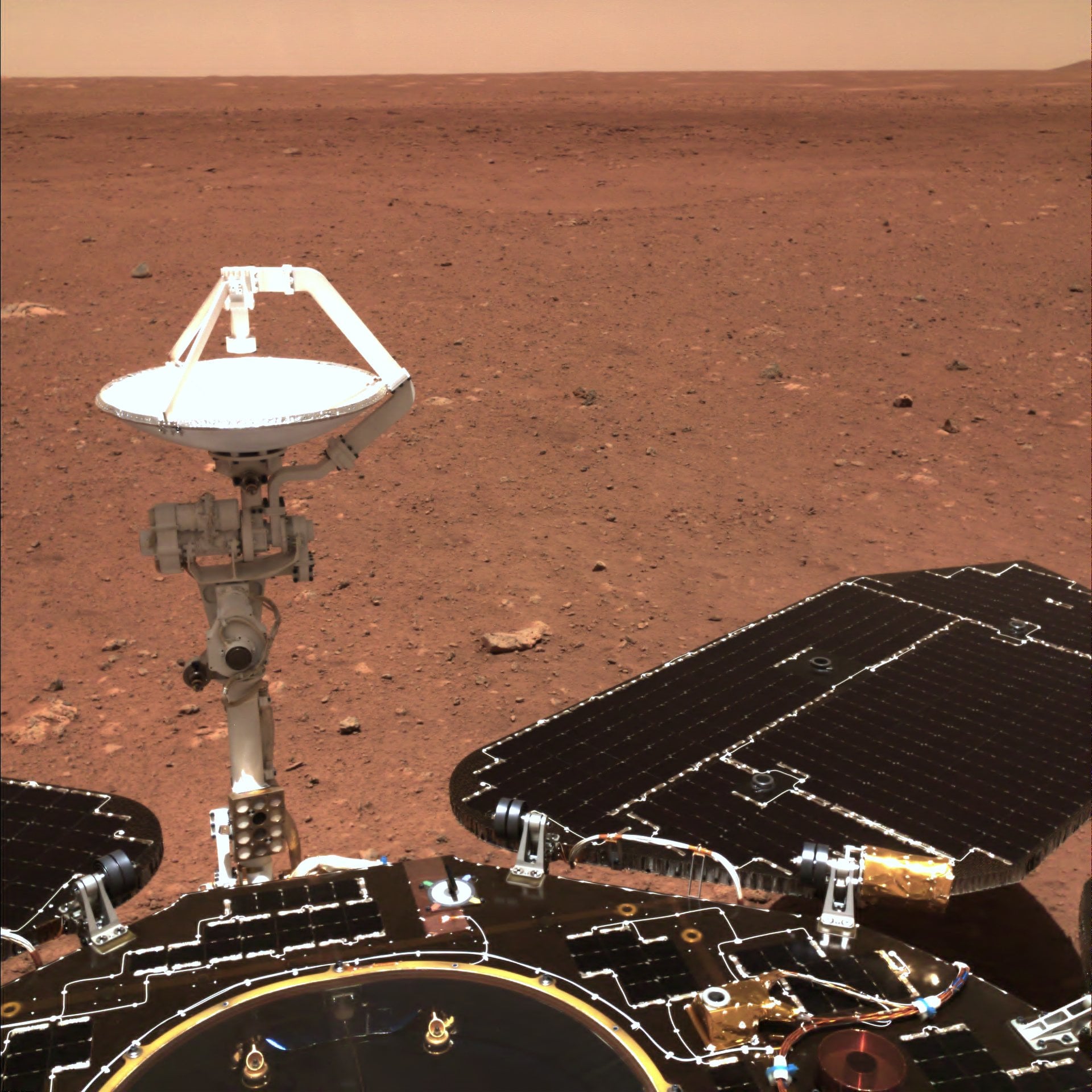Was there once life on Mars? That question has been the subject of ongoing exploration and research for more than half a century, and is closely tied to questions about how and when life emerged on Earth. At present, there are six active missions exploring the Red Planet for possible evidence of past life (and possibly present), including NASA’s Perseverance rover, the Curiosity rover, and the Mars Reconnaissance Orbiter (MRO), the UAE’s Hope orbiter, the ESA’s ExoMars Trace Gas Orbiter (TGO), and China’s Tianwen-1 orbiter and rover. In the near future, they will be joined by Tianwen-3, a sample-return mission consisting of two spacecraft.
Similar to the NASA/ESA Mars Sample Return (MSR) mission architecture, the mission will include a lander/ascent vehicle to obtain the samples and an Orbiter/Earth-return element to bring them back to Earth. In recent news, the University of Hong Kong (HKU) announced that the scientific team will include Professor Yiliang Li, an astrobiologist from the Department of Earth Sciences. Li will be leading an HKU group responsible for selecting the mission’s landing site: a region where liquid water once flowed and there’s an abundance of materials that are likely to preserve evidence of past (or present) life.
Li was also the lead author on a paper that describes the mission’s objective, which recently appeared in Nature Astronomy. He was joined by researchers from the Institute of Deep Space Sciences, the Deep Space Exploration Laboratory, the Chinese Academy of Geological Sciences, the CNSA Lunar Exploration and Space Engineering Center (LESEC), University of Science and Technology of China, the School of Remote Sensing and Information Engineering, the Key Laboratory of Earth and Planetary Physics, the Research Center for Planetary Science, the Beijing Institute of Spacecraft System Engineering (ISSE), and the Chinese Academy of Sciences (CAS), and the Chinese Academy of Geological Sciences.
 The roadmap of the Chinese Mars Sample Return mission, which will be launched in 2028. Credit: Hou, et al. (2025)
The roadmap of the Chinese Mars Sample Return mission, which will be launched in 2028. Credit: Hou, et al. (2025)
The search for evidence of life on Mars began with NASA’s Viking 1 and 2 missions, consisting of an orbiter and lander element. The two landers set down in Chryse Planitia
and Utopia Planitia, respectively, both of which are located in the Northern Lowlands. This region is believed to have once been a global ocean that spanned Mars’ northern hemisphere, making it a promising location for NASA scientists to search for biosignatures. While the results were inconclusive, the search continues and has been bolstered by the arrival of missions like Pathfinder, Spirit and Opportunity, Curiosity, and Perseverance.
Astrobiological research has also benefited from recent discoveries made here on Earth. Based on the most recent fossilized evidence, scientists theorize that life emerged in Earth’s oceans during the Archean Eon (ca. 4 billion years ago). Several lines of evidence also indicate that the evolution of microbial life during the first billion years was pivotal to Earth becoming a habitable planet. During Mars’ Noachian Period (ca. 4.1 – 3.7 billion years ago), conditions were similar to Earth’s, including a denser atmosphere, flowing water on the surface, and active volcanism. In other words, Mars had an environment favorable to the emergence of life while life was gaining a foothold on Earth.
To investigate this further, scientists hope to obtain samples from areas rich in hydrated minerals (which are essential to life) and where microbial activity could potentially be preserved for billions of years. As such, site selection is a crucial first step to any sample return mission, the protocol and strategy of which is detailed in the team’s paper. Also described are the scientific payloads and the methods used to detect potential biosignatures in the returned samples. These samples will be extracted from a drill depth of 2 meters (~6.5 feet), which is critical since organic materials are safe from radiation and toxic perchlorites at this depth.
In accordance with the Committee on Space Research (COSPAR) Planetary Protection Policy, the team also recommends establishing a Mars Sample Laboratory on the outskirts of Hefei, a major hub for scientific research where many of China’s leading research institutes are located. The laboratory will be equipped with the necessary scientific instruments to conduct a comprehensive analysis of the returned Mars samples while ensuring that they are safely contained to prevent exobiological contamination. If and when the samples are determined to contain no active biological agents, they will be released to designated laboratories for further detailed analyses.
 The rover Zhurong, depicted in the image, became China’s first rover to successfully land on the Martian surface in 2021. Credit: CNSA
The rover Zhurong, depicted in the image, became China’s first rover to successfully land on the Martian surface in 2021. Credit: CNSA
Due to the cancellation of the MSR mission, China is now poised to be the first country to return samples from Mars that could contain organic matter (and maybe even lifeforms!) The Tianwen-3 mission will build on the success of Tianwen-1, which successfully established orbit, landed on the surface, and deployed the Zhurong rover on Mars in 2021. In the process, China became the first nation to accomplish all three goals in a single mission, something the country hopes to do again in 2028. The CNSA released an Announcement of Opportunities (AO) on March 11th, which opened the mission to international collaboration.
The final selection of collaborators is scheduled for October 2025, and flight models of selected payloads are to be delivered in 2027. If everything goes according to plan, the samples will be returned to Earth by 2031.
Further Reading: Hong Kong University, Nature


